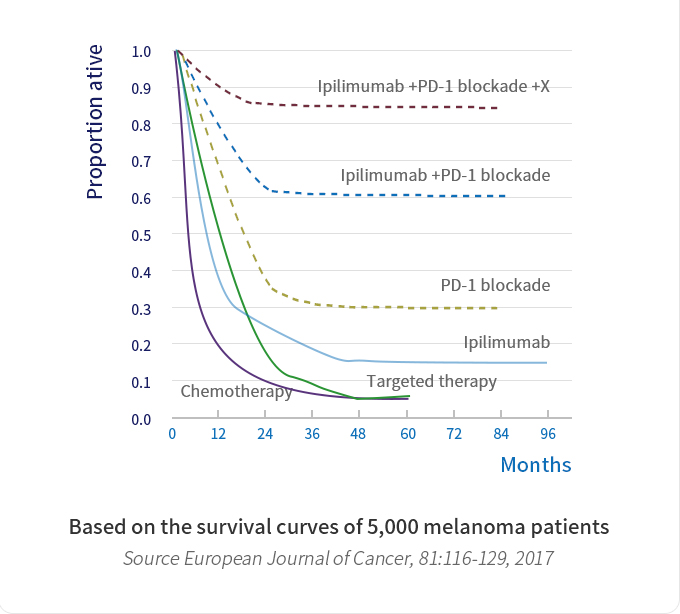Research Field
As chemotherapy drugs came under the spotlight in the 1940s, it inhibits the growth of cancer cells by killing rapidly dividing cells, but it also damages normally growing cells, causing serious side effects.
Targeted drugs were introduced in the 2000s,and their main characteristics are that they can selectively kill cancer cells without affecting most normal cells, but cancer cells are prone to drug-resistant mutations, resulting in high recurrence rate.
In the 2010s, immuno-oncology appeared and revolutionized the fight against cancers by activating or enhancing the body's immune system, thus treating a variety of cancers and achieving long-term disease control through long-term immune monitoring, which was once rated as the best scientific breakthrough by top academic journals.
Revolutionary scientific breakthrough, leading the future


- The breakthrough in the field of immuno-oncology is transformative in the field of anti-cancer treatment, promising a future of long-term control and even cure of cancer.
- Programmed death protein-1 ("PD-1") and programmed death ligand-1 ("PD-L1") antibodies are at the forefront of the immune-oncology clinical development. Broadly active across tumor types, PD-1/PD-L1 antibodies are quickly becoming the standard of care across more than a dozen tumor types with indications moving from later line to early line therapy and adjuvant/neo-adjuvant setting. Some patients have achieved long term disease control or clinical cure that are hallmarks of immunotherapy.
-
Managing cancer as a chronic disease further boosts the market potential

-
New and effective treatments improves patients' survival rate






